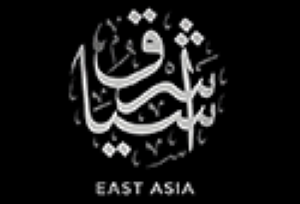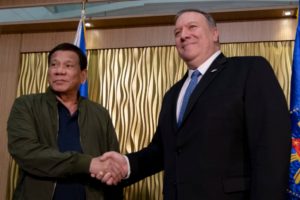 CC Image Courtesy of ODNI
CC Image Courtesy of ODNI
ISIS in the Philippines: A Cause for Concern
As the Islamic State of Iraq and Syria (ISIS) continues expanding its operations to regions outside of the Middle East, one geographic area to watch is Southeast Asia. Of particular interest to the U.S. is the Philippines, a country with a historically strong relationship with the U.S. In recent years, ISIS and its affiliates have escalated activities in the Philippines. The U.S. Department of State declared ISIS-Philippines a foreign terrorist organization in February 2018. The Philippines has continued to experience an increase in terrorist attacks, rising to #9 on the list of countries most affected by terrorism in 2019.
The Southern Philippines: Prime for Recruitment
The Philippines is a predominately Christian nation, while roughly 5.6% of its population adheres to Muslim beliefs. The Muslim citizens mainly reside in the southern part of the country, mostly in the Bangsamoro region, where the terrorist organization Abu Sayyaf Group (ASG) operates. The ASG is “one of the most violent Islamic separatist groups in the southern Philippines.” It aims to establish an Islamic State in the region and utilizes violent tactics, such as kidnapping Westerners for ransom and conducting assassinations. Abu Sayyaf emerged after separating from the Moro National Liberation Front (MNLF), the Philippine’s first Islamic extremist organization, in 1991. The group currently has between 300-400 active members and has been allied with ISIS since July 2014. Abu Sayyaf’s current leaders are Radulan Sahiron and Hatib Hajan Sawadjaan, the latter of whom is also presumed to be the current Islamic State leader in Southeast Asia.
ISIS started its outreach to the Philippines in 2016, when it began attracting extremists “who could not travel to its self-proclaimed caliphate in Iraq and Syria.” In 2017, ISIS militants successfully overran the city of Marawi in Mindanao, claiming the group’s first victory in the southern Philippines. Mirroring its successful Middle Eastern strategies, ISIS targets poverty-stricken and disgruntled individuals for recruitment through social media. ISIS employs tactics including the use of suicide bombers. This has benefitted the group, as the local extremist organizations Abu Sayyaf and the Maute group use this tactic and have pledged their allegiances to ISIS. ISIS has sent foreign fighters and directed funds to these affiliated groups.
Uptick in Terror
ISIS and its affiliated groups are increasing their activities in the southern Philippines. In November 2016, the ISIS-affiliated Maute group planted a bomb near the U.S. Embassy in Manila. The following year, the ISIS-affiliated Abu Sayyaf and Maute groups achieved a significant victory when they captured the city of Marawi. After five months of conflict, the Philippine government recaptured and placed the Muslim-majority city under martial law. The battles resulted in over 1,200 deaths and displaced 350,000 civilians. President Rodrigo Duterte’s martial law extended a further two years. While Duterte stated that government efforts succeeded in reducing terrorist activities, the martial law may have sown deeper discontent among residents as civilian victims were frustrated by the government’s slow response to helping the community.
In January 2019, a bombing in Jolo, the capital of the Sulu province, decimated the lone Catholic Church in the city. The attack that left 24 dead was orchestrated by an Indonesian jihadist couple with ties to Abu Sayyaf. Five months later, suicide bombers struck a counterterrorism unit of the Filipino Army, resulting in 5 deaths. While ISIS claimed responsibility for the attack, the ASG is believed to have conducted and orchestrated the plan. Most recently, a battle between Abu Sayyaf and the Armed Forces of the Philippines (AFP) occurred in mid-April 2020. The AFP experienced a crushing defeat, with 11 Filipino troops killed and another 14 wounded. As ISIS establishes new operations in the southern Philippines, it is crucial to thwart the group’s aspirations before more civilians join their ranks.

U.S. Secretary of State Michael R. Pompeo participates in a bilateral meeting with President of the Philippines Rodrigo Duterte in Manila, Philippines on February 28, 2019. Source: U.S. Department of State.
Looking Ahead
COVID-19 has ushered in unprecedented times that terrorist organizations are keen to capitalize upon. ISIS is no different. ISIS seeks to utilize the opportunities the pandemic has allowed to continue its propaganda and recruitment tactics. As the Filipino government struggles to contain the virus, ISIS will inevitably attempt to expand its influence in the region. To combat its outreach, the U.S. should consider further allocating resources towards countering rising ISIS activities in the southern Philippines to ensure that other large powers, like China, do not gain additional influence in the region.
In the past, training the AFP has shown success, and the U.S. would be wise to offer assistance once again. However, this assistance should not be unconditional. President Duterte’s questionable record against his political opponents has been well documented. For the U.S.’ continued support against Islamic extremism in the southern Philippines, Duterte will have to alleviate concerns that he won’t inappropriately challenge his political rivals or flagrantly violate standards for human rights in the name of anti-terror measures.





